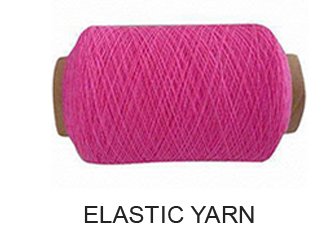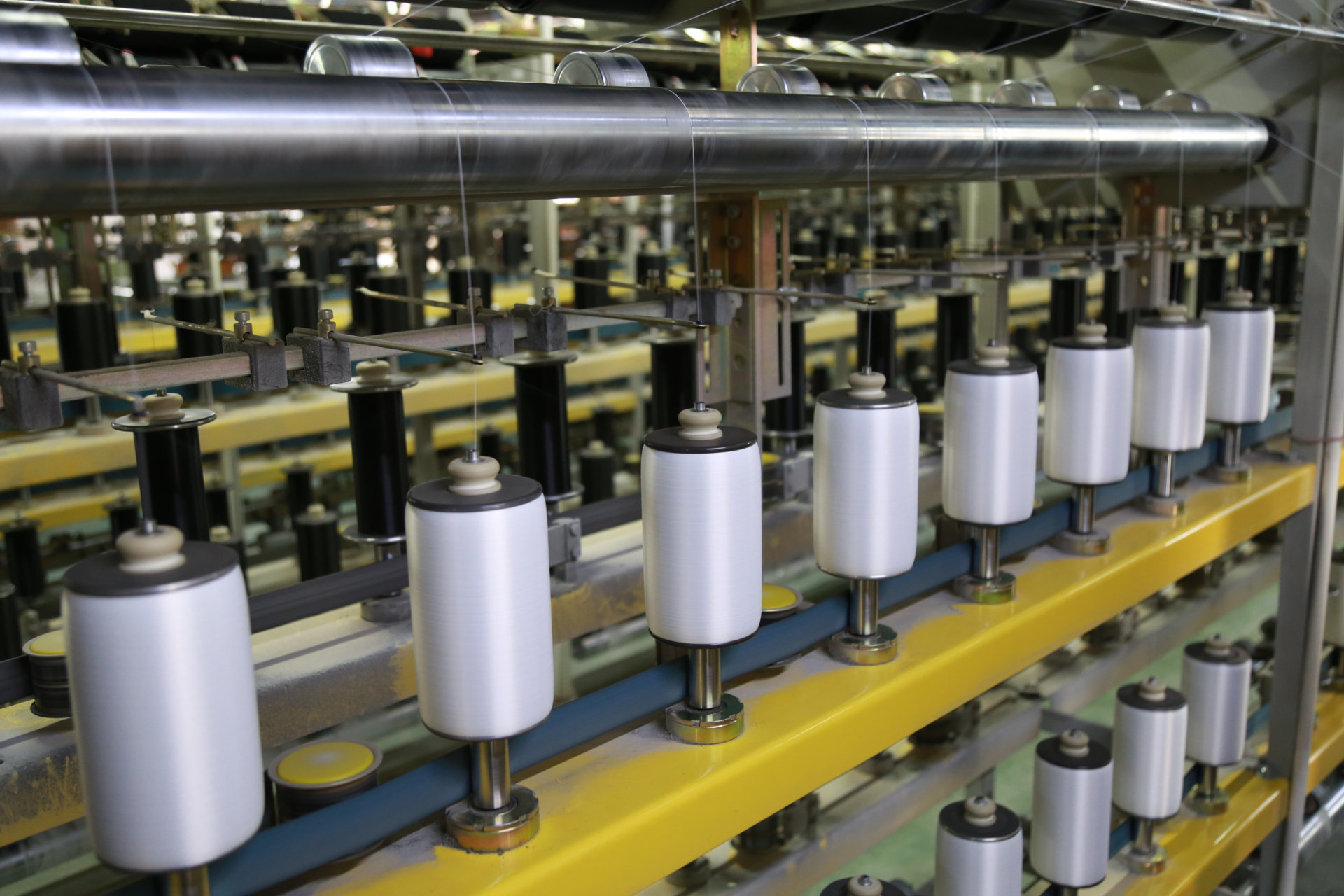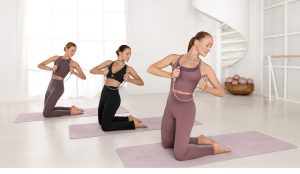The world of performance gear is constantly evolving, with manufacturers and designers always on the lookout for innovative materials that can give athletes and outdoor enthusiasts an edge. One such material that has been gaining traction in recent years is rubber covered yarn. This versatile textile combines the strength and flexibility of traditional yarn with the unique properties of rubber, creating a hybrid material that offers a range of benefits for high-performance apparel and equipment.
The Science Behind Rubber Covered Yarn

Rubber covered yarn is a remarkable fusion of textile and elastomer technologies, offering a unique set of properties that make it ideal for use in performance gear. This innovative material consists of a core yarn, typically made from polyester, nylon, or other synthetic fibers, which is then coated or encased in a thin layer of rubber or rubber-like material.
The Manufacturing Process
The production of rubber covered yarn involves a complex and highly specialized process. To begin, high-quality synthetic fibers are carefully selected for their strength, durability, and other desirable characteristics. These fibers are then spun into yarn using advanced spinning techniques that ensure consistency and quality.
Once the core yarn is prepared, it undergoes a coating process where it is enveloped in a thin layer of rubber or rubber-like material. This coating can be applied through various methods, including extrusion, dipping, or spraying. The choice of method depends on the specific properties desired in the final product, as well as the type of rubber compound being used.
The rubber coating is typically made from materials such as natural rubber, synthetic rubber, or thermoplastic elastomers. Each of these materials brings its own unique set of properties to the yarn, allowing manufacturers to tailor the final product to specific applications and performance requirements.
After the coating process, the yarn undergoes a curing or vulcanization process. This step is crucial as it helps to bond the rubber coating to the core yarn and enhances the overall strength and durability of the material. The curing process can involve heat, pressure, or chemical treatments, depending on the specific rubber compound used.
Unique Properties of Rubber Covered Yarn
The combination of a strong synthetic core and a flexible rubber coating results in a material with a range of exceptional properties. One of the most notable characteristics of rubber covered yarn is its excellent elasticity. The rubber coating allows the yarn to stretch significantly without losing its shape or structural integrity, making it ideal for use in form-fitting garments or equipment that requires flexibility.
Additionally, rubber covered yarn exhibits superior moisture resistance compared to traditional yarns. The rubber coating acts as a barrier, preventing water and other liquids from penetrating the core fibers. This property is particularly valuable in outdoor and athletic gear, where moisture management is crucial for comfort and performance.
Another key attribute of rubber covered yarn is its enhanced grip and friction properties. The rubber surface provides excellent traction, making it useful in applications where a non-slip surface is required. This characteristic has made rubber covered yarn popular in the production of gloves, shoe soles, and other items where a secure grip is essential.
Furthermore, the rubber coating adds an extra layer of protection to the core yarn, increasing its resistance to abrasion, chemicals, and UV radiation. This improved durability translates to longer-lasting products that can withstand the rigors of intense physical activity and harsh environmental conditions.
Customization and Versatility
One of the most exciting aspects of rubber covered yarn is its versatility and potential for customization. By adjusting factors such as the type of core yarn, the composition of the rubber coating, and the thickness of the coating, manufacturers can create yarns with a wide range of properties tailored to specific applications.
For example, yarns can be engineered to have varying levels of stretch, from highly elastic to relatively rigid. The rubber coating can be formulated to provide specific characteristics such as increased heat resistance, improved chemical resistance, or enhanced electrical conductivity. This ability to fine-tune the properties of rubber covered yarn opens up a world of possibilities for innovative product design in the performance gear industry.
Applications in Performance Gear

Rubber covered yarn has found its way into a wide range of performance gear applications, revolutionizing the way athletes and outdoor enthusiasts experience their activities. Its unique properties make it an ideal material for creating high-performance apparel and equipment that can withstand the rigors of intense physical activity and challenging environments.
Athletic Apparel
In the realm of athletic apparel, rubber covered yarn has become a game-changer. Its integration into sportswear has led to the development of garments that offer superior performance and comfort.
Compression wear is one area where rubber covered yarn truly shines. The elastic properties of the yarn allow for the creation of form-fitting garments that provide targeted compression to muscles, potentially improving blood flow and reducing muscle fatigue. These compression garments, ranging from shorts and leggings to shirts and arm sleeves, have become popular among athletes across various sports, from running and cycling to weightlifting and basketball.
The moisture-resistant properties of rubber covered yarn also make it an excellent choice for swimwear and water sports apparel. When used in swimsuits, the yarn helps to create a water-repellent surface that reduces drag in the water, potentially improving a swimmer’s speed and performance. Additionally, the material’s quick-drying nature ensures that athletes remain comfortable even when moving between water and land activities.
In team sports, rubber covered yarn is being used to create jerseys and uniforms that offer improved fit and mobility. The stretchy nature of the material allows for a full range of motion without restricting movement, while its durability ensures that the garments can withstand the physical demands of intense competition.
Outdoor Gear
The outdoor industry has also embraced rubber covered yarn, incorporating it into a variety of products designed for hiking, camping, and other adventure activities.
One of the most notable applications is in the production of high-performance outerwear. Jackets and pants made with fabric incorporating rubber covered yarn offer excellent weather resistance without sacrificing breathability. The rubber coating helps to repel water and wind, keeping the wearer dry and comfortable in challenging conditions. At the same time, the material’s inherent flexibility allows for unrestricted movement, making it ideal for activities like rock climbing or mountaineering.
Backpacks and gear bags are another area where rubber covered yarn is making an impact. When used in the construction of these items, the yarn contributes to improved water resistance and durability. Backpacks made with fabric containing rubber covered yarn are better equipped to protect their contents from the elements, making them a reliable choice for outdoor enthusiasts who need to keep their gear dry in unpredictable weather.
Tents and shelters have also benefited from the integration of rubber covered yarn. The material’s water-resistant properties help to create more effective rainflies and groundsheets, enhancing the overall weather protection of the shelter. Additionally, the elasticity of the yarn allows for the creation of tent fabrics that can better withstand strong winds and maintain their shape under stress.
Footwear Innovation
The footwear industry has found numerous applications for rubber covered yarn, particularly in the development of high-performance athletic and outdoor shoes.
In running shoes, the yarn is being used to create upper materials that offer a perfect balance of support and flexibility. The elastic nature of the yarn allows the upper to conform to the shape of the foot, providing a snug, comfortable fit that adapts to the foot’s movements during running. This can lead to improved stability and reduced risk of blisters or other foot-related issues.
For trail running and hiking shoes, rubber covered yarn is being incorporated into reinforced areas of the upper to improve durability and protection. The abrasion-resistant properties of the yarn help to create shoes that can withstand the harsh conditions of rugged terrain, extending the life of the footwear and providing better value for outdoor enthusiasts.
In water sports footwear, such as kayaking shoes or beach volleyball sneakers, the water-resistant properties of rubber covered yarn are being leveraged to create shoes that perform well in wet conditions. These shoes can offer improved grip on slippery surfaces while also drying quickly, enhancing both safety and comfort for athletes.
Sustainability and Future Trends
,aspect=fit)
As the performance gear industry continues to evolve, there is an increasing focus on sustainability and environmental responsibility. Rubber covered yarn is positioned to play a significant role in this shift towards more eco-friendly materials and production processes.
Eco-Friendly Innovations
The development of sustainable rubber covered yarn is an area of active research and innovation. Many manufacturers are exploring ways to create these yarns using more environmentally friendly materials and processes.
One promising avenue is the use of natural rubber as a coating material. Natural rubber, derived from the sap of rubber trees, is a renewable resource that can be harvested without causing permanent damage to the trees. When properly sourced and processed, natural rubber can offer a more sustainable alternative to synthetic rubber compounds.
Additionally, researchers are investigating the potential of bio-based synthetic rubbers, which are derived from renewable resources such as plant oils or agricultural waste. These materials have the potential to reduce the carbon footprint of rubber covered yarn production while maintaining the high performance standards required for athletic and outdoor gear.
The core yarn itself is also being reimagined with sustainability in mind. Recycled polyester and other recycled synthetic fibers are increasingly being used as the base material for rubber covered yarns. This approach not only reduces the demand for virgin materials but also helps to address the growing problem of textile waste.
Circular Economy Initiatives
The concept of a circular economy, where materials are reused and recycled rather than discarded after use, is gaining traction in the performance gear industry. Rubber covered yarn has the potential to play a significant role in this shift towards more sustainable practices.
Manufacturers are exploring ways to design products made with rubber covered yarn that can be easily disassembled at the end of their life cycle. This would allow for the separation of different materials, facilitating more effective recycling processes.
Furthermore, research is being conducted into methods for reclaiming and recycling rubber covered yarn from used garments and equipment. While this presents technical challenges due to the composite nature of the material, advances in recycling technologies are making it increasingly feasible.
Some companies are also implementing take-back programs, where customers can return their worn-out gear for recycling or repurposing. This not only helps to reduce waste but also creates a closer connection between brands and consumers, fostering a shared commitment to sustainability.
Future Applications and Innovations
As technology continues to advance, the potential applications for rubber covered yarn in performance gear are expanding. Researchers and designers are exploring new ways to leverage the unique properties of this material to create even more innovative and high-performing products.
One area of interest is the development of “smart” textiles that incorporate rubber covered yarn. By integrating conductive materials into the rubber coating, it may be possible to create fabrics that can monitor an athlete’s vital signs or provide real-time feedback on form and technique.
Another promising direction is the use of rubber covered yarn in 3D-printed textiles. This could allow for the creation of highly customized performance gear tailored to an individual’s specific body shape and movement patterns.
The potential for rubber covered yarn to be used in protective equipment is also being explored. Its ability to absorb impact and disperse energy could make it valuable in the development of new types of padding and armor for sports and other high-risk activities.
Conclusion
Rubber covered yarn has emerged as a groundbreaking material in the world of performance gear, offering a unique combination of properties that enhance the functionality and durability of athletic and outdoor equipment. From compression wear that supports muscle performance to weather-resistant outerwear that keeps adventurers comfortable in challenging conditions, this innovative textile is reshaping the way we approach the design and manufacturing of high-performance products.
As the industry continues to evolve, with an increasing emphasis on sustainability and technological innovation, rubber covered yarn is poised to play an even more significant role in the future of performance gear. Its versatility and potential for customization make it an ideal material for addressing the complex and varied needs of athletes and outdoor enthusiasts.
The ongoing research into more sustainable production methods and the exploration of new applications for rubber covered yarn suggest that we have only scratched the surface of what this material can offer. As we look to the future, it’s clear that rubber covered yarn will continue to push the boundaries of what’s possible in performance gear, enabling athletes to reach new heights of achievement and outdoor enthusiasts to explore the world with greater comfort and confidence.
{done



